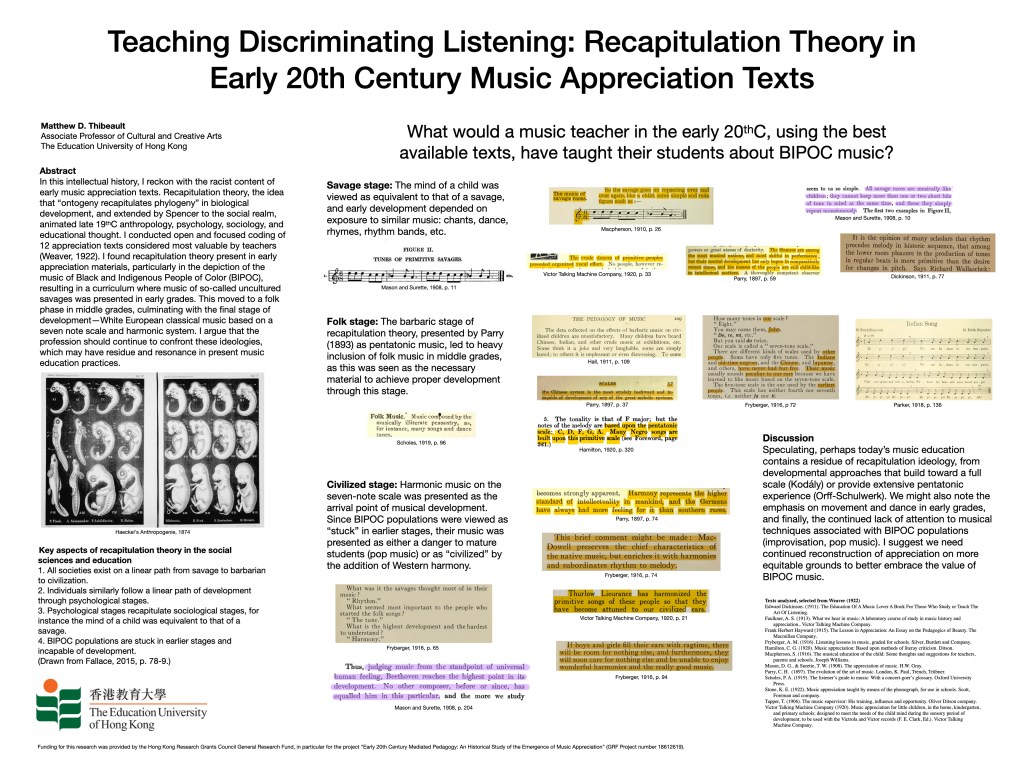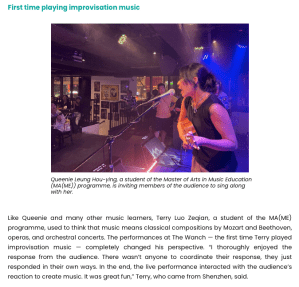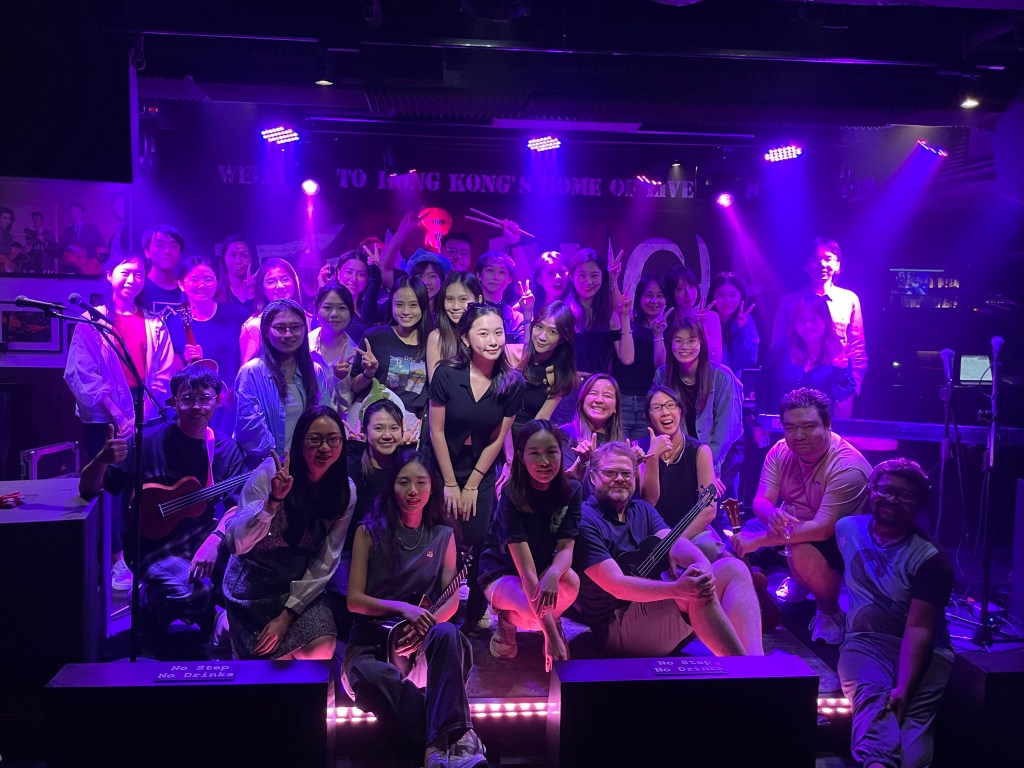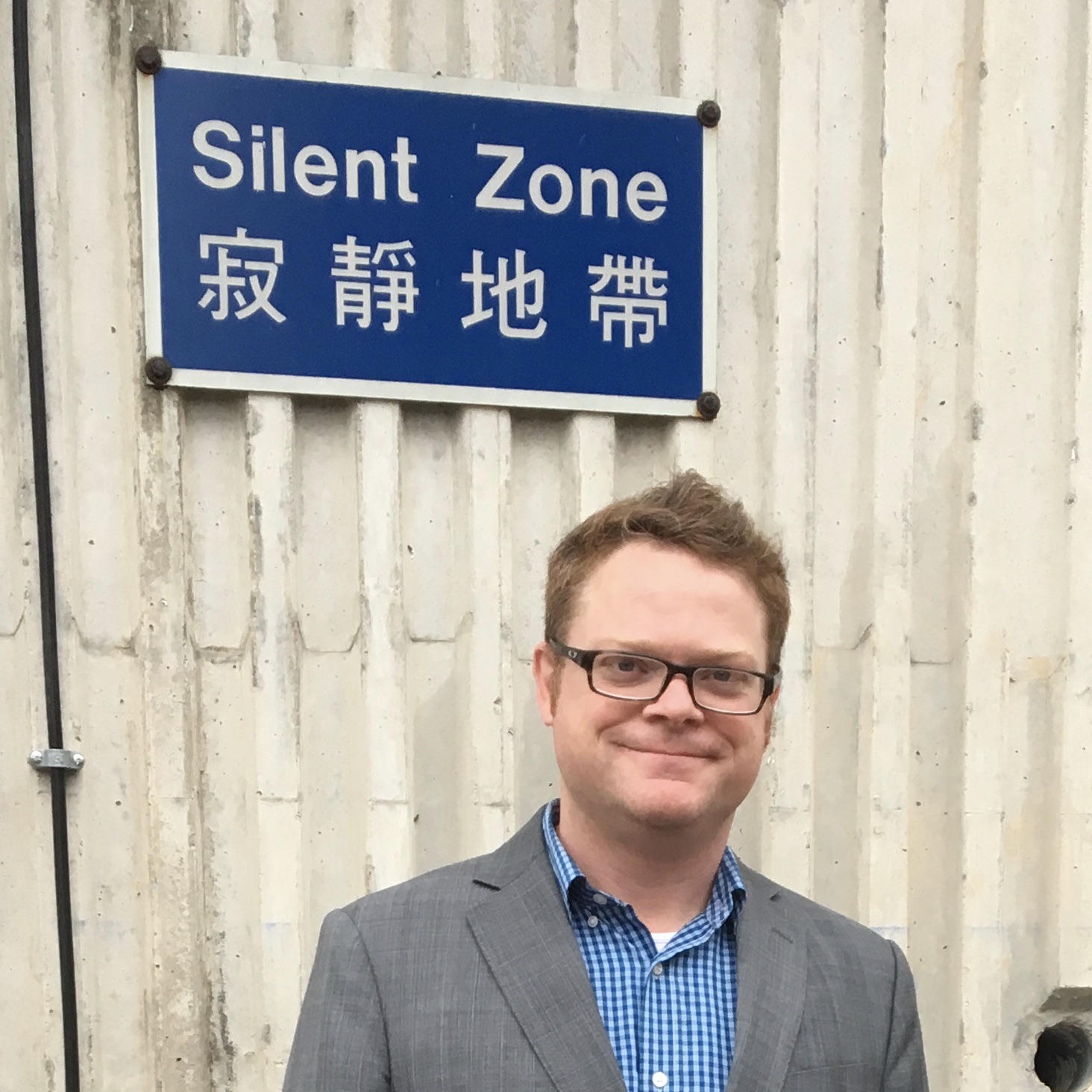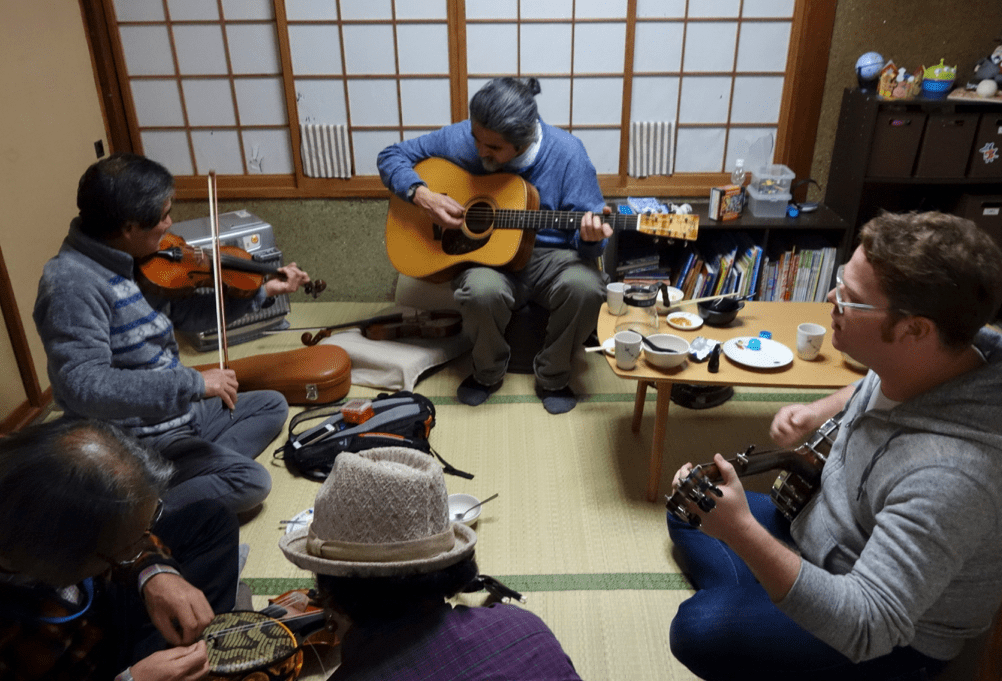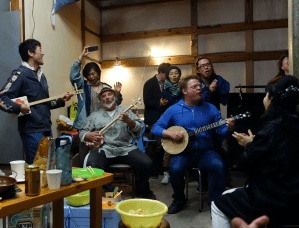Here’s a short overview of my engagement with sound studies as a music educator in preparation for my participation in the virtual conference Sound, Meaning, Education: Conversations.
I first learned of sound studies in 2005 via a review of Katz’s Capturing Sound in the New Yorker. A few years later, when I was teaching at the University of Illinois I met Jonathan Sterne, who was on campus to give a talk on the MP3 book he was then finishing—an encounter that influenced me deeply. I taught Sterne’s Audible Past in a doctoral seminar, which helped me start to understand what was, for me, a different way of thinking about sound in human experience.
I began trying to make conceptual sense of the implications of sound studies in a series of essays, including my introductory essay as editor of the section on media in the Oxford Handbook of Music Education, “Music education in the postperformance world.” I followed this up with an article focused more on sound recordings, “The shifting locus of musical experience from performance to recording to data: Some implications for music education.” The essay draws on short stories by James Joyce and Richard Powers to look at the subjective side of experience with music across time, and for this paper I received the Outstanding Emerging Researcher in Music Education (a pre-tenure paper award by the SMERS conference at the Universtiy of Florida).
I further considered music education and sound studies as a Faculty Fellow at the Illinois Program for Research in the Humanities during the 2012-2013 school year. Part of my output from this time was a basic overview and literature review in the Journal of Aesthetic Education, “Sound studies and music education.” I attended the sound studies conference at Oxford in summer of 2014 to meet more of the thinkers and writers in the field.
What was missing in my work at the time was a deeper engagement with music education examples using ideas and approaches from sound studies, and so that was where I turned my efforts. My first significant effort was a piece looking at mediated pedagogy in string education, “Learning with Sound Recordings: A History of Suzuki’s Mediated Pedagogy.” With Koji Matsunobu I also co-authored a handbook chapter, “Learning from Japanese Vocaloid Hatsune Miku.”
Two other pieces in press will appear “online first” in the coming months:
Thibeault, M. D. (in press). “Aebersold’s Mediated Play-A-Long Pedagogy and the Invention of the Beginning Jazz Improvisation Student.” Journal of Research in Music Education.
Thibeault, M. D. (in press). “John Philip Sousa’s Historic Resistance to Technology in Music Learning.” Journal of Historical Research in Music Education.
Finally, my current project is supported by the General Research Fund of the Hong Kong Research Grants Council, “Early 20th Century Mediated Pedagogy: An Historical Study of the Emergence of Music Appreciation.” I expect to share several outputs from this project in the coming years.
Some of my publications that are informed by sound studies
Thibeault, M. D. (2010). Hip-hop, digital media, and the changing face of music education. General Music Today, 24(1), 46–49. https://doi.org/10.1177/1048371310379097
Thibeault, M. D. (2012a). From compliance to creative rights in music education: Rethinking intellectual property in the age of new media. Music Education Research, 14(1), 103–117. https://doi.org/10.1080/14613808.2012.657165
Thibeault, M. D. (2012b). Music education in the postperformance world. In G. McPherson & G. Welch (Eds.), The Oxford handbook of music education. Volume 2 (pp. 517–529). Oxford University Press.
Thibeault, M. D. (2012c). Ubiquitous music learning in a postperformance world. In C. Benedict & P. K. Schmidt (Eds.), The place of music in the 21st century: A global view (pp. 196–215). National Society for the Study of Education Yearbook, Teachers College Press.
Thibeault, M. D. (2012d). Wisdom for music education from the recording studio. General Music Today, 25(2), 49–52. https://doi.org/10.1177/1048371311425408
Thibeault, M. D. (2014a). Algorithms and the Future of Music Education: A Response to Shuler. Arts Education Policy Review, 115(1), 19–25. https://doi.org/10.1080/10632913.2014.847355
Thibeault, M. D. (2014b). Exploring the Old Town School of Folk Music’s Beck Song Reader Ensemble An Interview With Nathaniel Braddock. General Music Today, 27(2), 43–47. https://doi.org/10.1177/1048371313507278
Thibeault, M. D. (2014c). The shifting locus of musical experience from performance to recording to data: Some implications for music education. Music Education Research International, 6, 38–55.
Thibeault, M. D. (2014d). Media as an invitation to rethink music education. General Music Today, 27(3), 36–39. https://doi.org/10.1177/1048371314522646
Ruthmann, S.A., Tobias, E. S., Randles, C., & Thibeault, M. D. (2015). Is it the technology? Challenging technological determinism in music education. In C. Randles (Ed.), Music education: Navigating the future (pp. 122–138). Routledge.
Thibeault, M. D. (2016). Understanding sheet music as a medium to expand pedagogic practice. Journal of Music, Technology and Education, 9(2), 209–222. https://doi.org/10.1386/jmte.9.2.209_1
Thibeault, M. D. (2017). Sound Studies and Music Education. The Journal of Aesthetic Education, 51(1), 69–83. https://doi.org/10.5406/jaesteduc.51.1.0069
Thibeault, M. D. (2018). Learning with Sound Recordings: A History of Suzuki’s Mediated Pedagogy. Journal of Research in Music Education, 66(1), 6–30. https://doi.org/10.1177/0022429418756879
Thibeault, M. D., & Matsunobu, K. (2020). Learning from Japanese Vocaloid Hatsune Miku. In J. Waldron, K. K. Veblen, & S. Horsley (Eds.), Oxford Handbook of Social Media and Music Learning (pp. 511–528). Oxford University Press.
Thibeault, M. D. (in press). Aebersold’s Mediated Play-A-Long Pedagogy and the Invention of the Beginning Jazz Improvisation Student. Journal of Research in Music Education.
Thibeault, M. D. (in press). John Philip Sousa’s Historic Resistance to Technology in Music Learning. Journal of Historical Research in Music Education.
